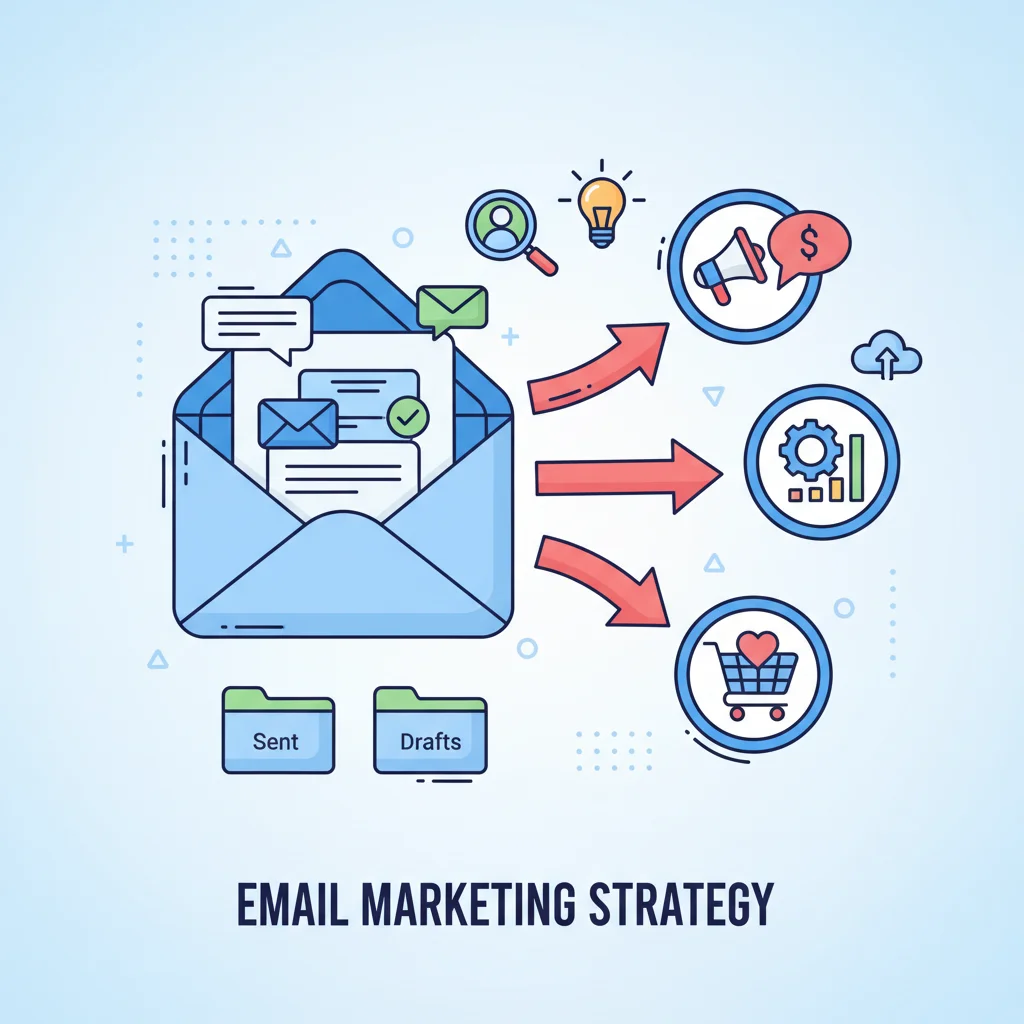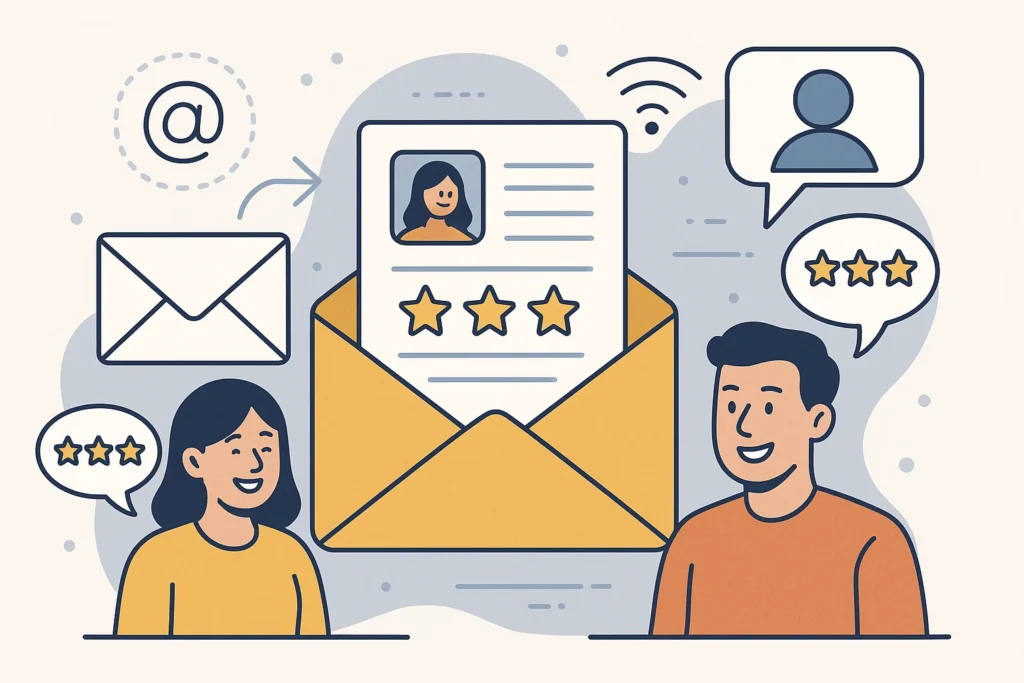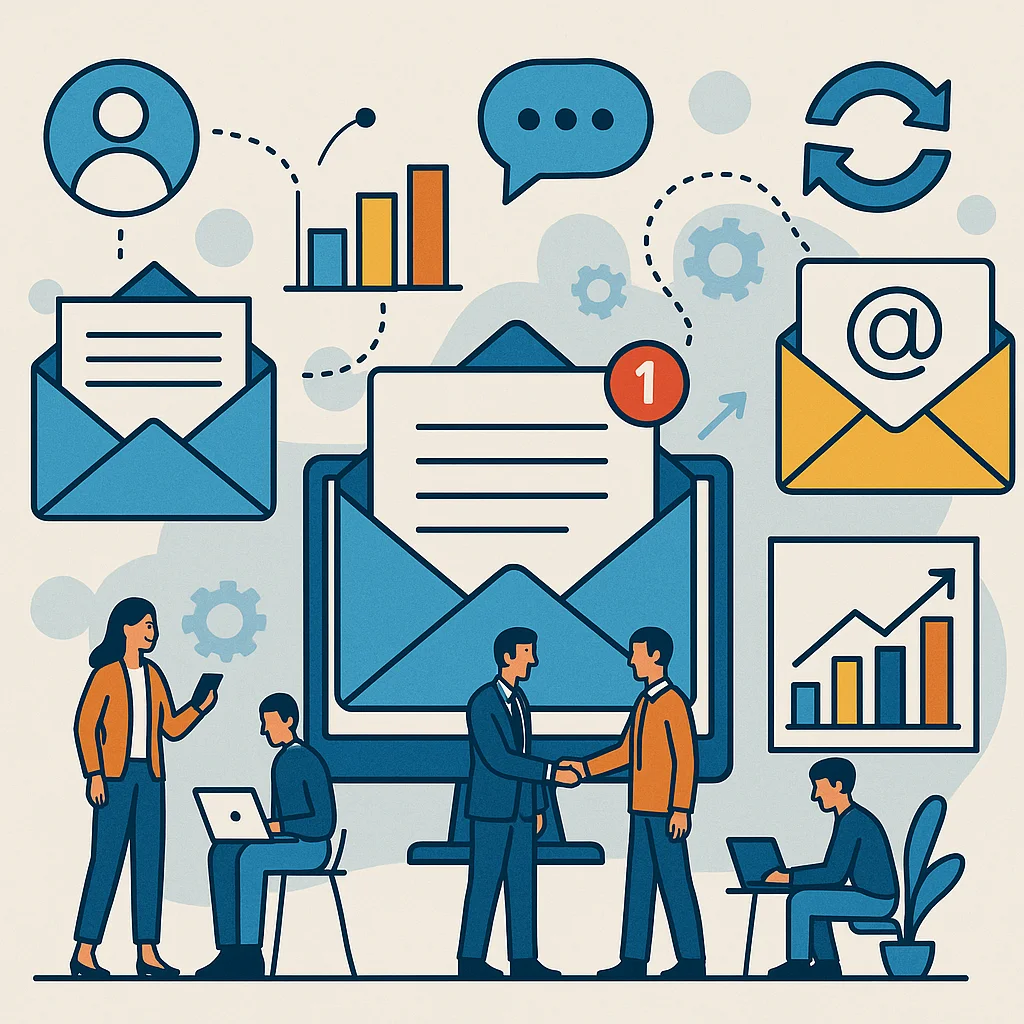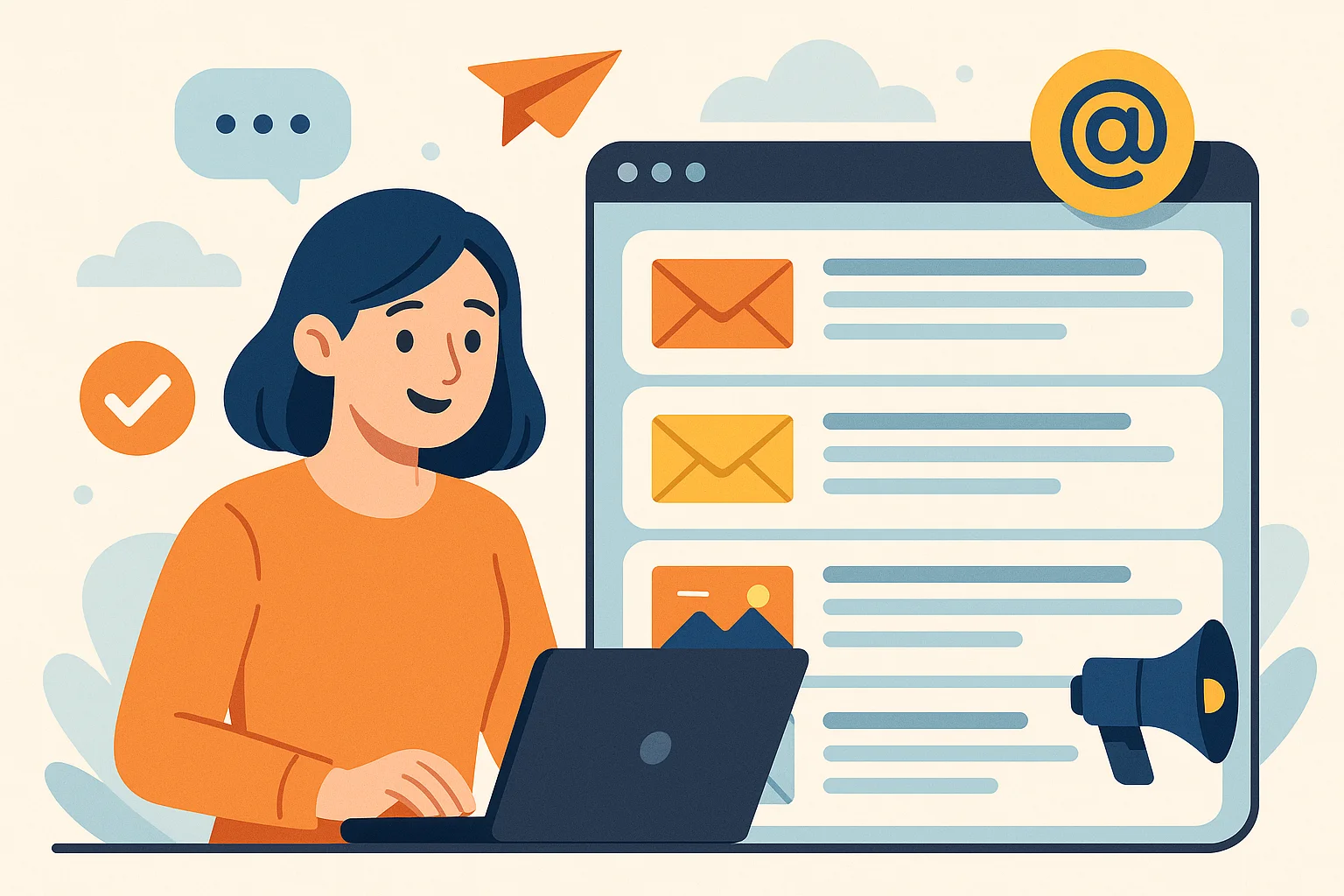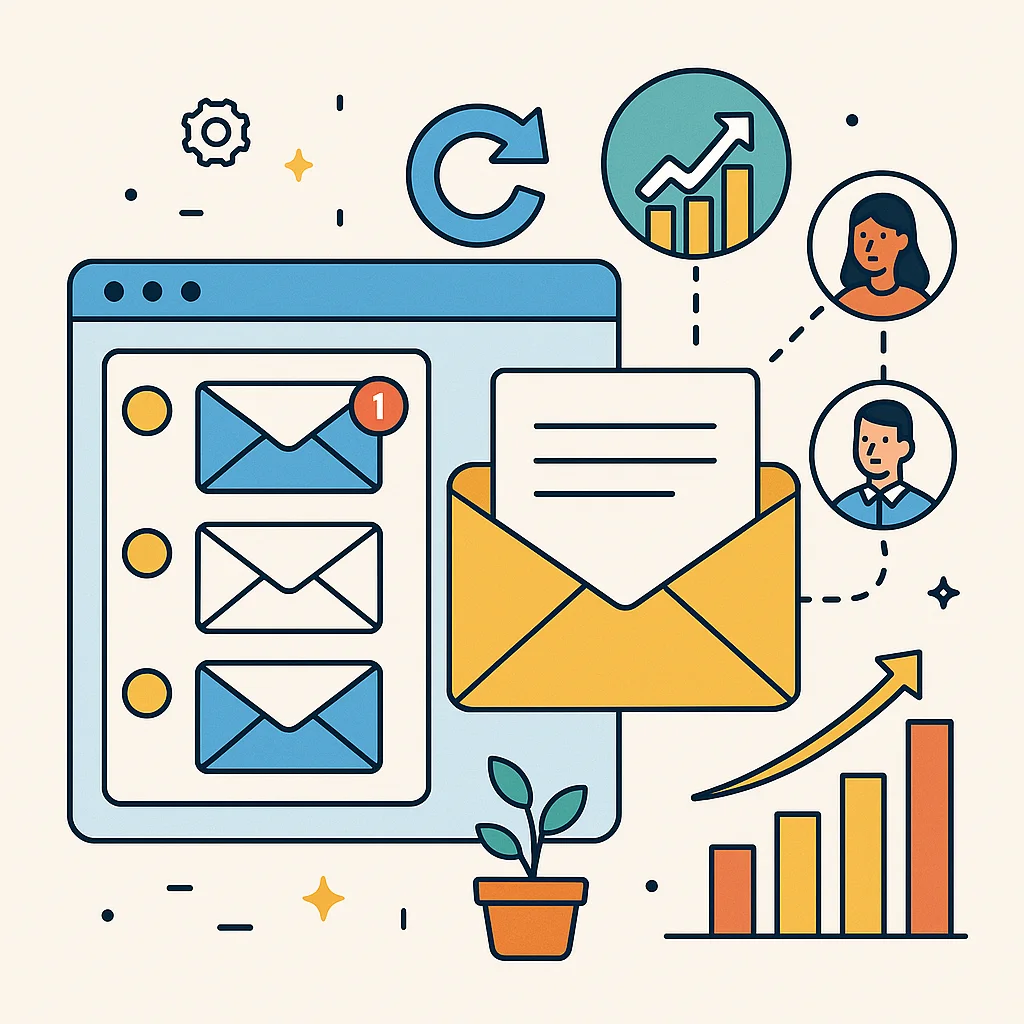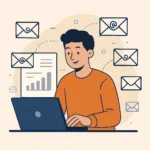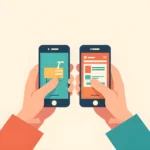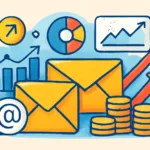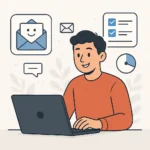Now Reading: How To Create a Email Marketing Funnel Step By Step
-
01
How To Create a Email Marketing Funnel Step By Step
How To Create a Email Marketing Funnel Step By Step
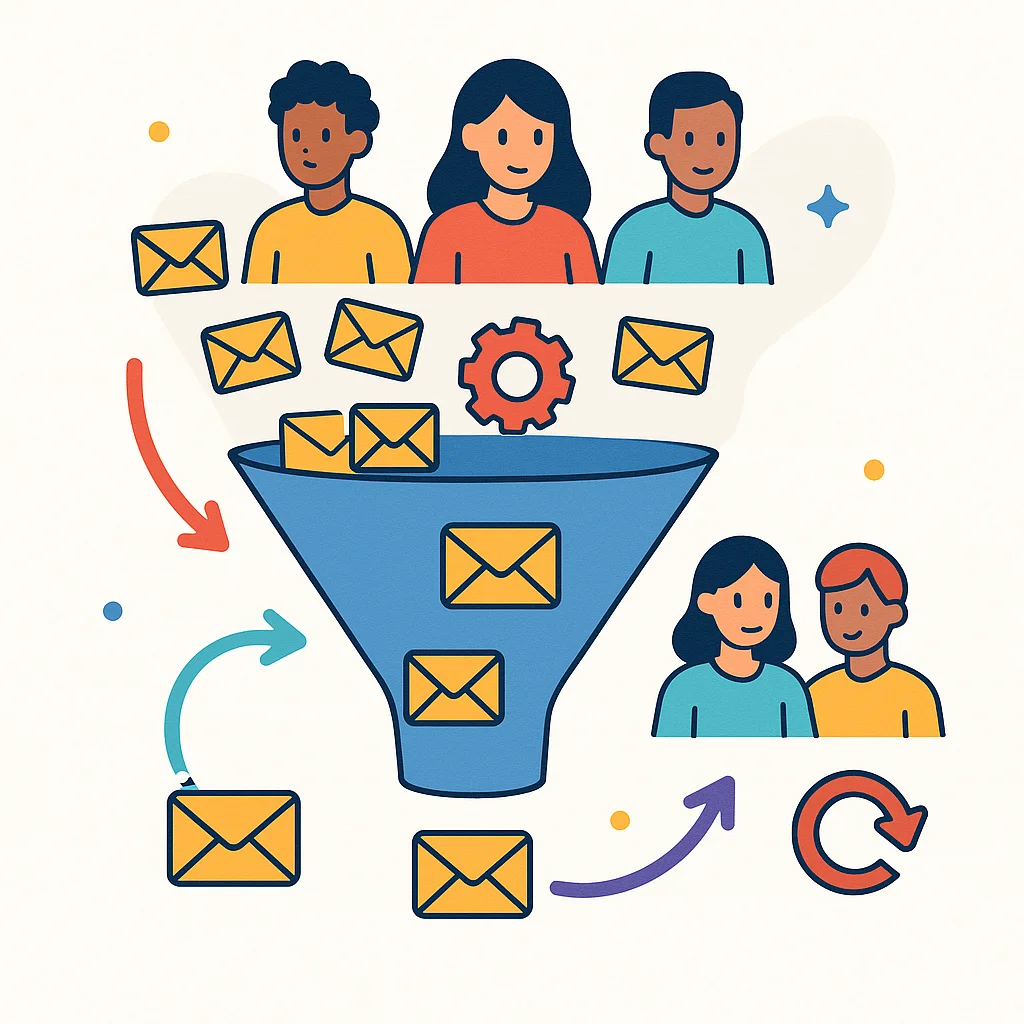
Stop! Before you send another random email blast, ask yourself this: are your emails making money or just making noise? Most businesses treat email like a megaphone, shouting the same message to everyone. But smart marketers know the secret – they create email marketing funnel that speaks directly to where each subscriber is in their buying journey. Want to turn your email list into your most profitable marketing channel? Here’s your roadmap.
Key Takeaways
Building an effective email marketing funnel involves creating a systematic approach that guides subscribers from awareness to purchase through strategic email sequences. Here’s what you need to know:
- Map your customer journey – Identify the stages prospects go through from first hearing about you to making a purchase
- Create compelling lead magnets – Offer valuable resources like ebooks, discounts, or free trials to capture email addresses
- Segment your audience – Group subscribers based on behavior, interests, and demographics for targeted messaging
- Design stage-specific content – Craft different email types for awareness, consideration, and conversion phases
- Set up automation sequences – Use email marketing tools to deliver the right message at the right time automatically
- Focus on value first – Educate and help before you sell to build trust and credibility
- Include clear calls-to-action – Guide subscribers toward the next step with specific, actionable instructions
- Test and optimize regularly – Monitor open rates, click-through rates, and conversions to improve performance
Understanding Email Marketing Funnels
When you create email marketing funnel, you’re essentially building a roadmap that guides your subscribers from “Who are you?” to “Take my money!” It’s not about bombarding people with sales pitches – it’s about creating a logical sequence that provides value while moving people closer to purchase.
Think of it like dating. You wouldn’t propose on the first date, right? Same principle applies here. Your email funnel nurtures relationships over time, building trust and demonstrating value before asking for the sale.
An email marketing funnel typically includes four main stages: lead generation, lead nurturing, conversion, and retention. Each stage serves a specific purpose and requires different types of content to be effective.
Useful Articles:
Mapping Your Customer Journey
Before you create email marketing funnel content, you need to understand how your customers think and behave. This starts with creating a customer journey map that visualizes every touchpoint from awareness to advocacy.
Identifying Critical Stages
Your customer journey likely includes these key phases:
Awareness stage – People discover they have a problem or need
Interest stage – They start researching solutions and learning about options
Consideration stage – They evaluate different products or services
Decision stage – They’re ready to make a purchase
Retention stage – They become repeat customers and advocates
For each stage, think about what questions your prospects are asking, what concerns they have, and what information they need to move forward.
Understanding Touchpoints
Map out every interaction someone might have with your brand through email. This could include welcome emails, educational newsletters, product announcements, or special offers. Each touchpoint should serve a purpose in moving people through your funnel.
Consider your customer’s perspective at each stage. Someone in the awareness phase needs education, not a hard sell. Someone in the decision phase needs reassurance and incentives to choose you over competitors.
Building Your Lead Generation System
The foundation of any successful email funnel is a steady stream of qualified leads. You can’t create email marketing funnel without people to send emails to, so this step is crucial.
Creating Irresistible Lead Magnets
Your lead magnet is the valuable resource you offer in exchange for someone’s email address. The best lead magnets solve a specific problem your target audience faces.
Popular lead magnet formats include:
- Ebooks and guides – Comprehensive resources that dive deep into topics
- Checklists and templates – Practical tools people can use immediately
- Free trials or demos – Let people experience your product firsthand
- Webinars and workshops – Live or recorded educational sessions
- Discount codes – Immediate savings on first purchases
- Quizzes and assessments – Interactive tools that provide personalized results
Your lead magnet should be closely related to your paid products or services. If you sell project management software, a “Remote Team Productivity Checklist” makes more sense than a generic “Business Tips” ebook.
Optimizing Opt-in Forms
Where and how you present your opt-in forms dramatically impacts conversion rates. Strategic placement includes:
Website header and footer – Always visible but not intrusive
Blog post content – Contextually relevant to what people are reading
Exit-intent popups – Catch people before they leave your site
Landing pages – Dedicated pages focused solely on capturing leads
Social media – Drive traffic to landing pages from your social channels
Make your forms simple. Ask for minimal information initially – usually just name and email address. You can gather more details later as people become more engaged.
Timing Your Opt-in Requests
Don’t hit visitors with a popup the second they land on your site. Give them time to explore and understand your value before asking for their email. Research shows waiting 8-10 seconds before showing popups can improve both conversion rates and lead quality.
Useful Articles:
Designing Your Funnel Stages
Now comes the meat of your funnel – the actual email sequences that guide subscribers toward purchase. When you create email marketing funnel content, each stage should feel natural and valuable.
Top of Funnel (Awareness Stage)
This is where you make first impressions and establish credibility. Your goals here are to:
- Welcome new subscribers warmly
- Set expectations for future emails
- Provide immediate value
- Introduce your brand story and values
- Begin building trust and authority
Welcome email series should be your first priority. This typically includes 3-5 emails sent over the first week after someone subscribes. Start with delivering whatever lead magnet they signed up for, then provide additional valuable content related to their interests.
Educational content works best at this stage. Share industry insights, helpful tips, tutorials, or behind-the-scenes content that showcases your expertise without being salesy.
Middle of Funnel (Consideration Stage)
Once people know and trust you, they’re ready for more detailed information about solutions to their problems. This stage focuses on:
- Demonstrating your expertise through case studies
- Sharing customer success stories and testimonials
- Providing detailed guides and resources
- Addressing common objections and concerns
- Positioning your products as solutions
Case studies and testimonials are particularly powerful here. Share specific examples of how you’ve helped other customers achieve results. Include concrete numbers and outcomes whenever possible.
Deep-dive educational content also works well. If your awareness stage content introduced concepts, your consideration stage content should explore those topics in much greater detail.
Bottom of Funnel (Conversion Stage)
This is where you make your sales pitch, but it should feel like a natural next step rather than a sudden shift. Focus on:
- Presenting specific offers and solutions
- Creating urgency with limited-time deals
- Addressing final objections
- Making the purchase process simple
- Providing social proof and guarantees
Special offers and promotions are common at this stage, but they should provide genuine value rather than feeling desperate. Limited-time discounts, exclusive bonuses, or early access to new products can motivate action.
Product demonstrations, free consultations, or trial offers help reduce purchase risk and let people experience your value firsthand.
Segmentation and Personalization
Not everyone on your email list is the same, so your emails shouldn’t be either. Effective segmentation allows you to create email marketing funnel experiences that feel personally relevant to each subscriber.
Behavioral Segmentation
Track how people interact with your emails and website to create behavioral segments:
- Email engagement – Separate highly engaged subscribers from less active ones
- Website activity – Segment based on pages visited or time spent on site
- Purchase history – Treat first-time buyers differently than repeat customers
- Content preferences – Note which topics generate the most engagement
This data helps you send more targeted emails that match each person’s interests and engagement level.
Demographic Segmentation
Basic demographic information can significantly improve email relevance:
- Location – Customize offers based on geography or time zones
- Industry or job title – Tailor content to specific professional needs
- Company size – Adjust messaging for small businesses vs. enterprises
- Experience level – Provide beginner content vs. advanced strategies
Collect this information gradually through your emails rather than overwhelming people with long signup forms.
Dynamic Content
Use your email platform’s dynamic content features to automatically customize emails based on subscriber data. This might include:
- Personalized product recommendations
- Location-specific offers or events
- Content based on past purchase behavior
- Industry-specific examples and case studies
Useful Articles:
Email Automation and Sequences
Automation is what transforms your email funnel from a manual process into a scalable system. When you create email marketing funnel automation, you’re building a system that works 24/7 without constant oversight.
Welcome Series Automation
Your welcome series is typically the highest-performing email sequence you’ll send. Set up a 5-7 email series that delivers over the first two weeks after someone subscribes:
Email 1 – Immediate delivery of lead magnet and warm welcome
Email 2 – Share your story and what subscribers can expect
Email 3 – Provide additional valuable content related to their interests
Email 4 – Social proof through customer stories or testimonials
Email 5 – Soft introduction to your products or services
Email 6 – Educational content that positions you as an expert
Email 7 – Clear call-to-action for next steps
Abandoned Cart Recovery
For ecommerce businesses, abandoned cart emails can recover 15-25% of lost sales. Set up a sequence that triggers when someone adds items to their cart but doesn’t complete purchase:
Email 1 – Gentle reminder sent 1 hour after abandonment
Email 2 – Address common concerns and include social proof (24 hours later)
Email 3 – Offer incentive like free shipping or small discount (3 days later)
Re-engagement Campaigns
Automatically identify subscribers who haven’t engaged recently and send targeted re-engagement sequences. These might include:
- “We miss you” messages with special offers
- Surveys asking about content preferences
- Exclusive content for inactive subscribers
- Final “goodbye” emails before removing unengaged contacts
Content Strategy for Each Stage
The content you create for each funnel stage should match where people are in their buying journey. When you create email marketing funnel content, think about the mindset and needs of people at each stage.
Educational Content for Awareness
Early-stage content should focus on helping rather than selling. Popular formats include:
- How-to guides that solve specific problems
- Industry insights that demonstrate your expertise
- Tips and best practices that provide immediate value
- Behind-the-scenes content that humanizes your brand
- Curated resources that save subscribers time and effort
Make this content genuinely helpful. People should feel like they got value even if they never buy anything from you.
Social Proof for Consideration
Middle-stage content should build confidence in your ability to deliver results:
- Detailed case studies with specific outcomes and metrics
- Customer testimonials that address common concerns
- Before-and-after stories that show transformation
- Expert interviews that position you among industry leaders
- Comparison guides that help people evaluate options
Include concrete numbers and specific details whenever possible. “Increased sales by 40%” is more compelling than “improved results significantly.”
Compelling Offers for Conversion
Bottom-stage content should make it easy and attractive to take action:
- Limited-time promotions that create urgency
- Exclusive bonuses available only to email subscribers
- Free trials or consultations that reduce purchase risk
- Payment plans that make higher-priced items accessible
- Guarantees that eliminate buyer’s remorse
Frame your offers in terms of value rather than features. Focus on outcomes and benefits rather than product specifications.
Optimization and Testing
Your initial email funnel is just the starting point. Continuous testing and optimization are essential for maximizing results when you create email marketing funnel systems.
A/B Testing Key Elements
Test one element at a time to get clear data on what works:
Subject lines – Try different lengths, emotional triggers, and personalization
Send times – Test different days of the week and times of day
Email content – Compare different approaches, lengths, and formats
Call-to-action buttons – Test different colors, text, and placement
From names – Try personal names vs. company names
Run tests long enough to get statistically significant results. This usually means at least a few hundred opens per variation.
Monitoring Key Metrics
Track metrics that matter for each stage of your funnel:
Open rates – Indicates subject line and sender reputation effectiveness
Click-through rates – Shows how compelling your content and offers are
Conversion rates – Measures how well emails drive desired actions
Unsubscribe rates – Signals if content isn’t matching expectations
Revenue per email – The ultimate measure of funnel effectiveness
Don’t obsess over vanity metrics. A smaller, highly engaged list often generates more revenue than a large, unengaged one.
Continuous Improvement
Use your data to make informed improvements:
- Replace low-performing emails with new versions
- Extend sequences that show strong engagement
- Adjust timing based on when your audience is most active
- Refine segmentation based on behavioral patterns
- Update content to reflect seasonal trends or industry changes
Small improvements compound over time. A 5% increase in conversion rates might seem minor, but it can significantly impact your bottom line over months and years.
Creating an effective email marketing funnel takes time and testing, but the results speak for themselves. When you create email marketing funnel that truly serves your audience, you’ll build a sustainable system that generates consistent revenue while building genuine relationships with your customers.


